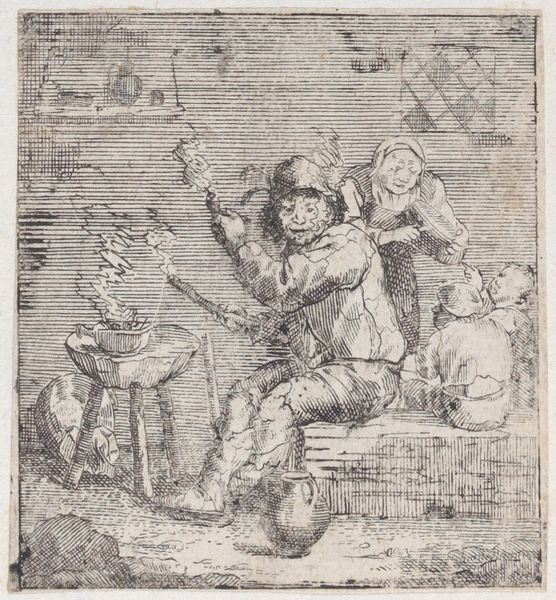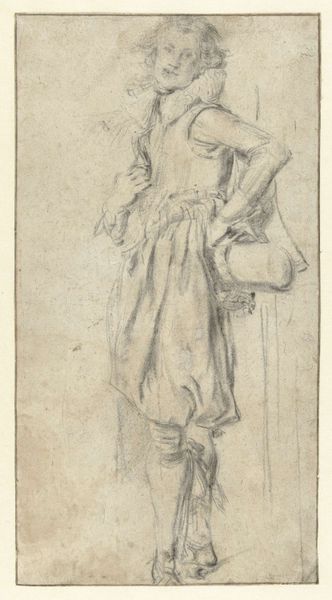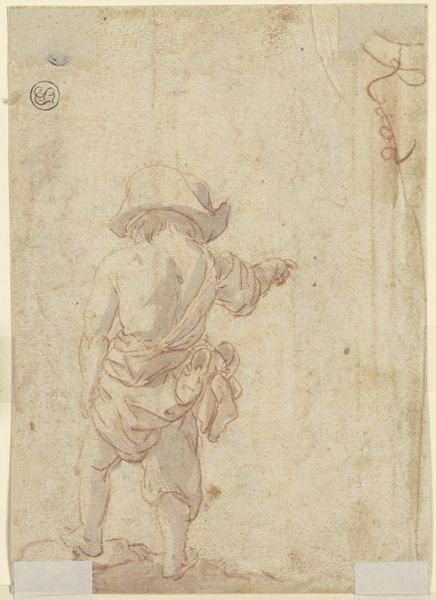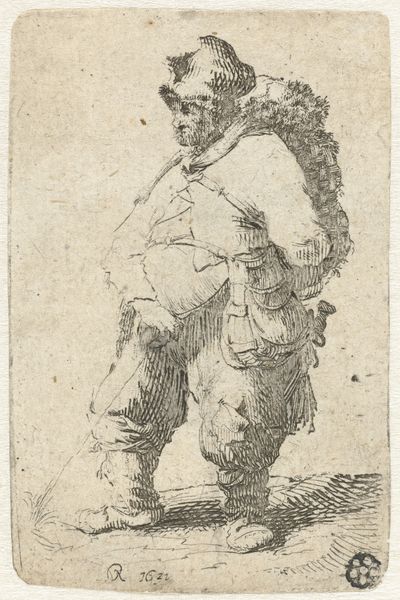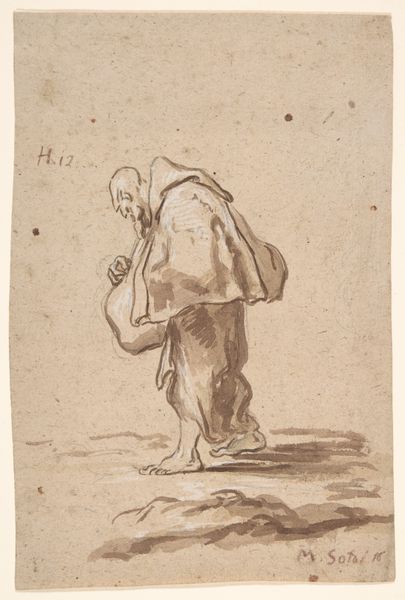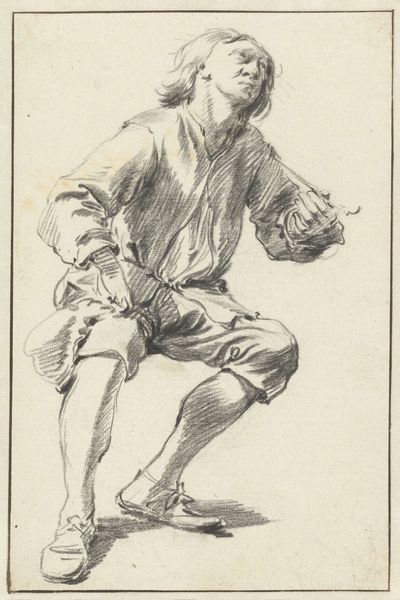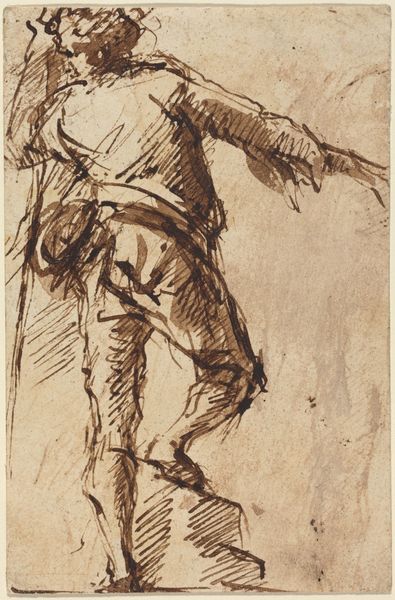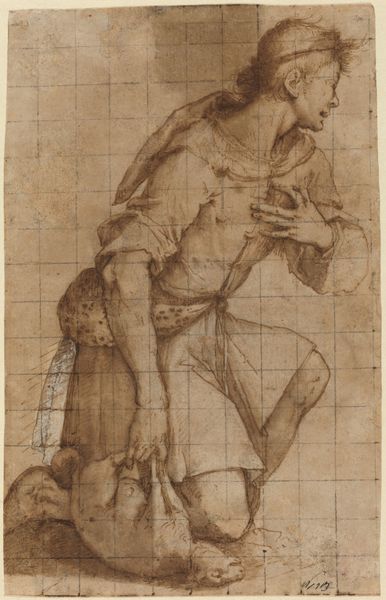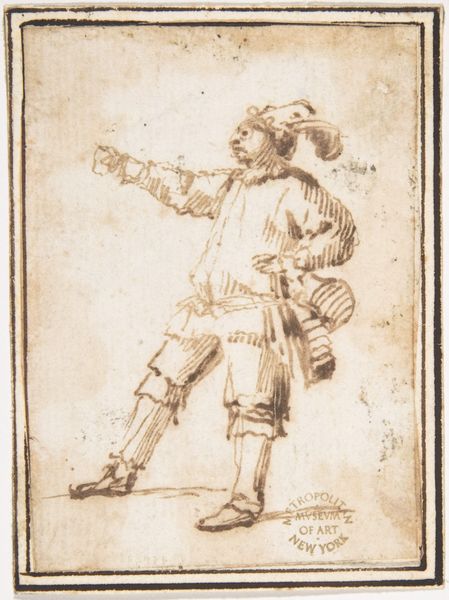
#
pencil drawn
#
toned paper
#
light pencil work
#
pencil sketch
#
personal sketchbook
#
sketchbook drawing
#
pencil work
#
watercolour illustration
#
sketchbook art
#
watercolor
Dimensions: height 153 mm, width 113 mm
Copyright: Rijks Museum: Open Domain
Curator: A decidedly unfussy portrayal, wouldn’t you say? What immediately strikes you about this unnamed sketch from the 17th century? Editor: There’s an almost…casual intimacy to it. Despite being just pencil and watercolour on toned paper, there's a vibrancy—the figure seems caught mid-moment, drinking from that hefty jug with genuine gusto. A very unidealized presentation of rural life I presume? Curator: The immediacy certainly transcends the medium. Observe the composition; the cross-hatching adds depth without obscuring the quick, confident lines that define the figure. Semiotically speaking, the slightly tilted jug hints at abundance, possibly referencing the bounty of labor but one might add a touch of overindulgence. Editor: That feels appropriate, I suspect such renderings of peasantry were not widely revered in their time? I wonder about its potential role within the art world of that era. Perhaps part of a larger, moralizing narrative, cautionary in nature? Curator: The identity of the artist remains a mystery, making historical positioning speculative. This unknown origin also contributes to the sketch’s charm. There's an almost rebellious subversion, contrasting it against academic rigidity and classical allusion. Editor: It does suggest that it was an exercise or personal piece. Notice the material properties: the soft gradations achieved with watercolor complement the toned paper, lending the sketch an antique quality even before age. The play of light and shadow focuses our attention on his face. Is it content, exhausted or inebriated, I cannot confidently say! Curator: I agree, although its precise function in history remains opaque, its formal properties invite ongoing evaluation. Editor: Indeed! What began as a quick draught has certainly proved engaging beyond what the artist may have first believed.
Comments
No comments
Be the first to comment and join the conversation on the ultimate creative platform.


